“The Examples” begins with a new revelation about the dark matter anomaly, adds an interesting new personality to the DMA investigative team, and sends Burnham and Book on a dangerous rescue mission which places them both right in the DMA’s path.
After learning that the DMA is apparently an artificial construction, hinted at by its random path through space and then revealed by its ability to jump light years in an instant, I wouldn’t go so far as to say that I’m disappointed… but I do find the anomaly less interesting now than when it was seemingly a force of nature at play.
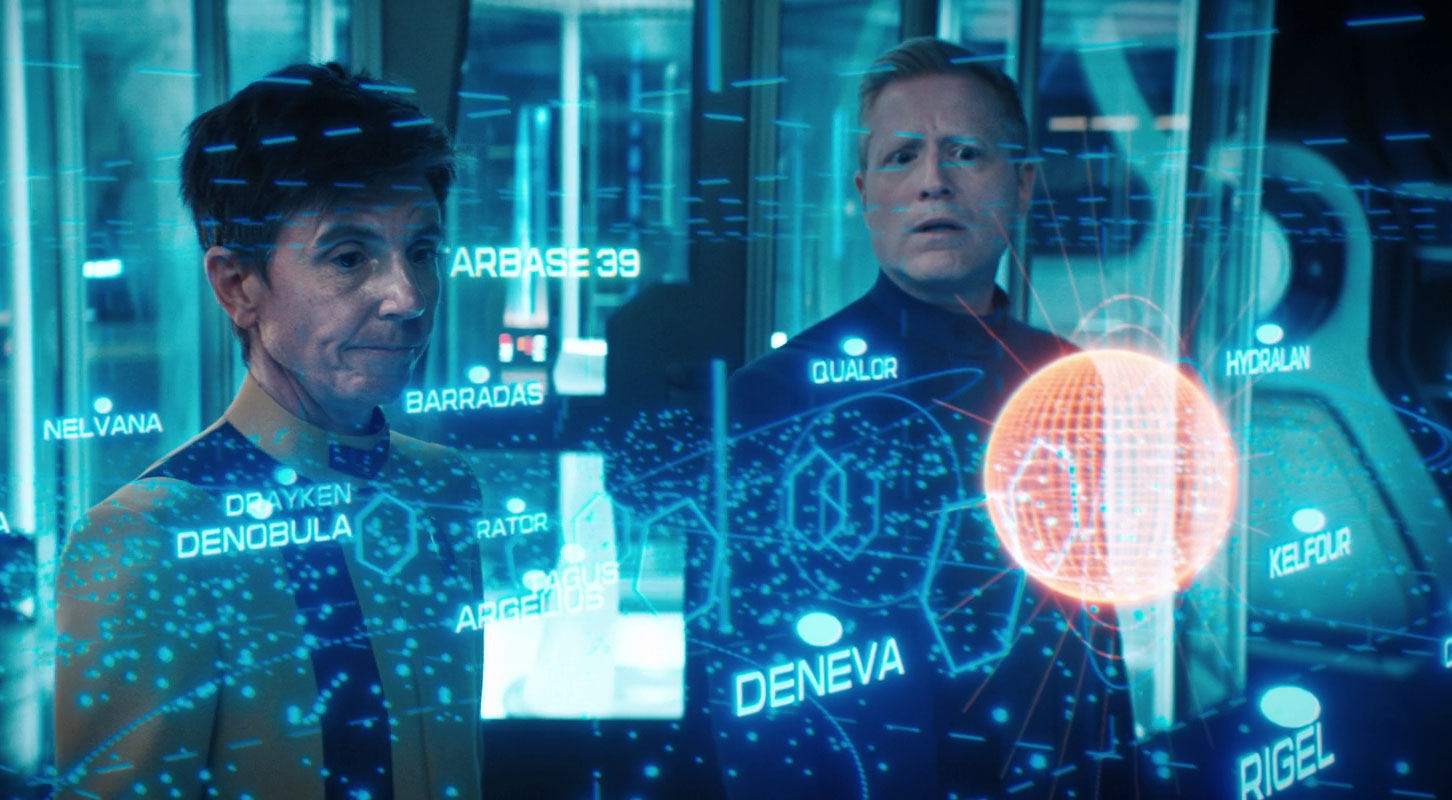
It’s not clear yet whether the DMA is being actively controlled, or even that it’s of recent construction — it’s entirely possible that the anomaly is ancient, set on autopilot, or both — so it’s hard to know for sure that there’s a moustache-twirling villain behind the wheel.
Personally, if it can’t be a natural force then having it be a wanderer of sorts is the next most interesting thing, I suppose; a ‘big bad with a big weapon’ isn’t a particularly original or complex source of drama. If instead the DMA turns out to be something like the planet killer from “The Doomsday Machine” (which was entirely automated), or like V’Ger from Star Trek: The Motion Picture (consciously destructive, but not malicious), I’ll be pleased.
After Admiral Vance (Oded Fehr) rules out some of the more powerful and godlike alien races from Star Trek canon, figuring out who is behind the DMA is going to be no easy task. Despite mild objections from Paul Stamets (Anthony Rapp), the admiral calls in an expert Risian scientist to join the team aboard Discovery, the same prickly and seemingly-arrogant man currently working to develop a new spore drive from Stamets’ research.
Ruan Tarka (Shawn Doyle) arrives to lend his expertise, and while I’m not sure I’d call him arrogant, he is definitely not the easiest guy to work with — but he’s a whole lot of fun to watch. He seems at first to be the fairly tired “lone genius” stereotype that has shown up everywhere in the last decade or two; cranky, abrasive, uncouth, Tarka is like Doctor House in space (or, at least, a more entertaining Mortimer Harren).
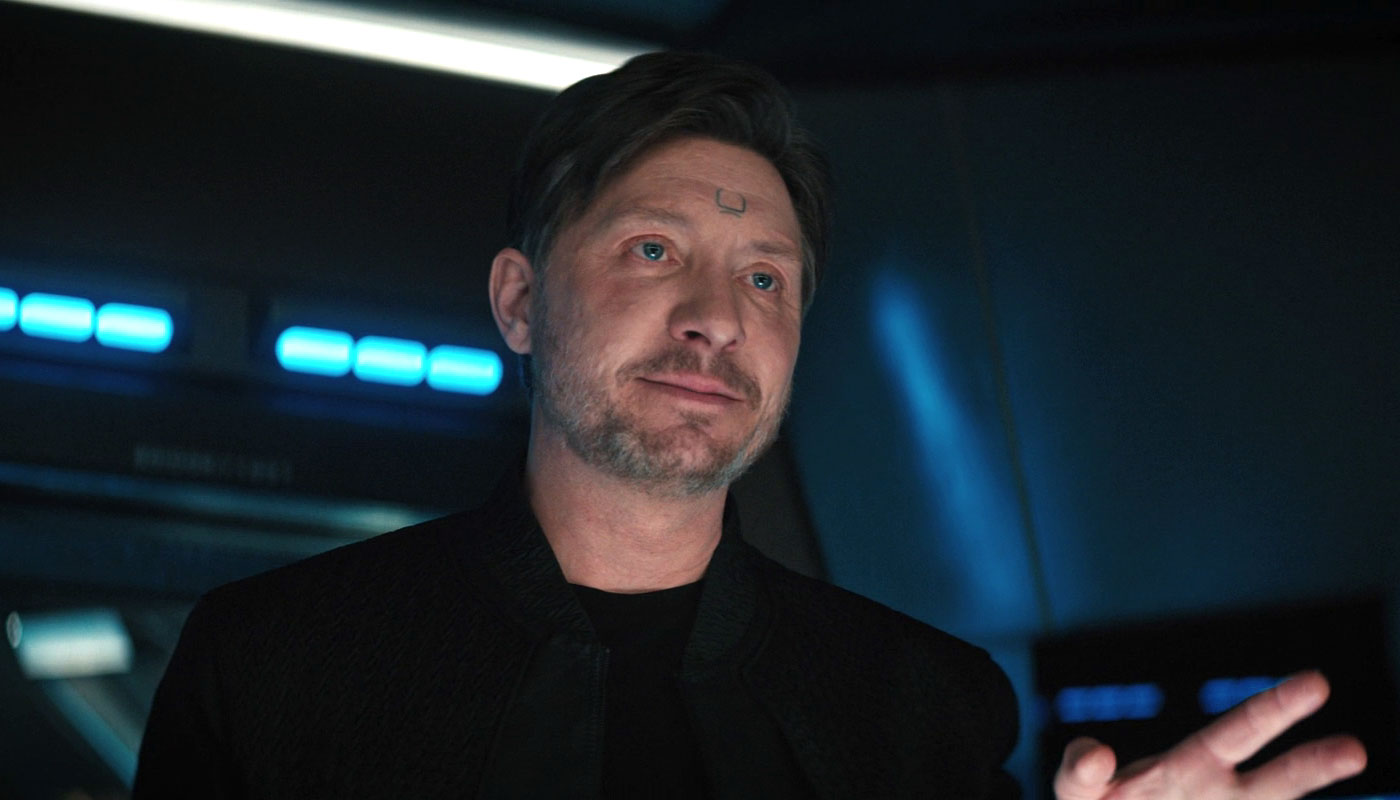
It doesn’t take long, though, before something more nuanced starts to peek through the characterization — something that makes him much more interesting. He is confident in his own abilities, yes, but unlike so many other depictions of lone geniuses, Tarka’s self-confidence doesn’t translate into lacking confidence in others.
He may be frustrated with the cautious direction that Stamets and Saru (Doug Jones) want to take their research, but once he wins them over to his plan he is never dismissive of their skills, and doesn’t treat them any less than peers.
Even when there’s conflict of vision, it’s among equals; when Tarka randomly begins wordlessly shouting in Saru’s face, he does so with the hopes that Saru will shout back — and he’s delighted when Saru finally does, much to Jett Reno (Tig Notaro)’s bewilderment.
It’s a subtle difference, but one that is so often missing with this type of character and one that keeps the antagonism from feeling like abuse.
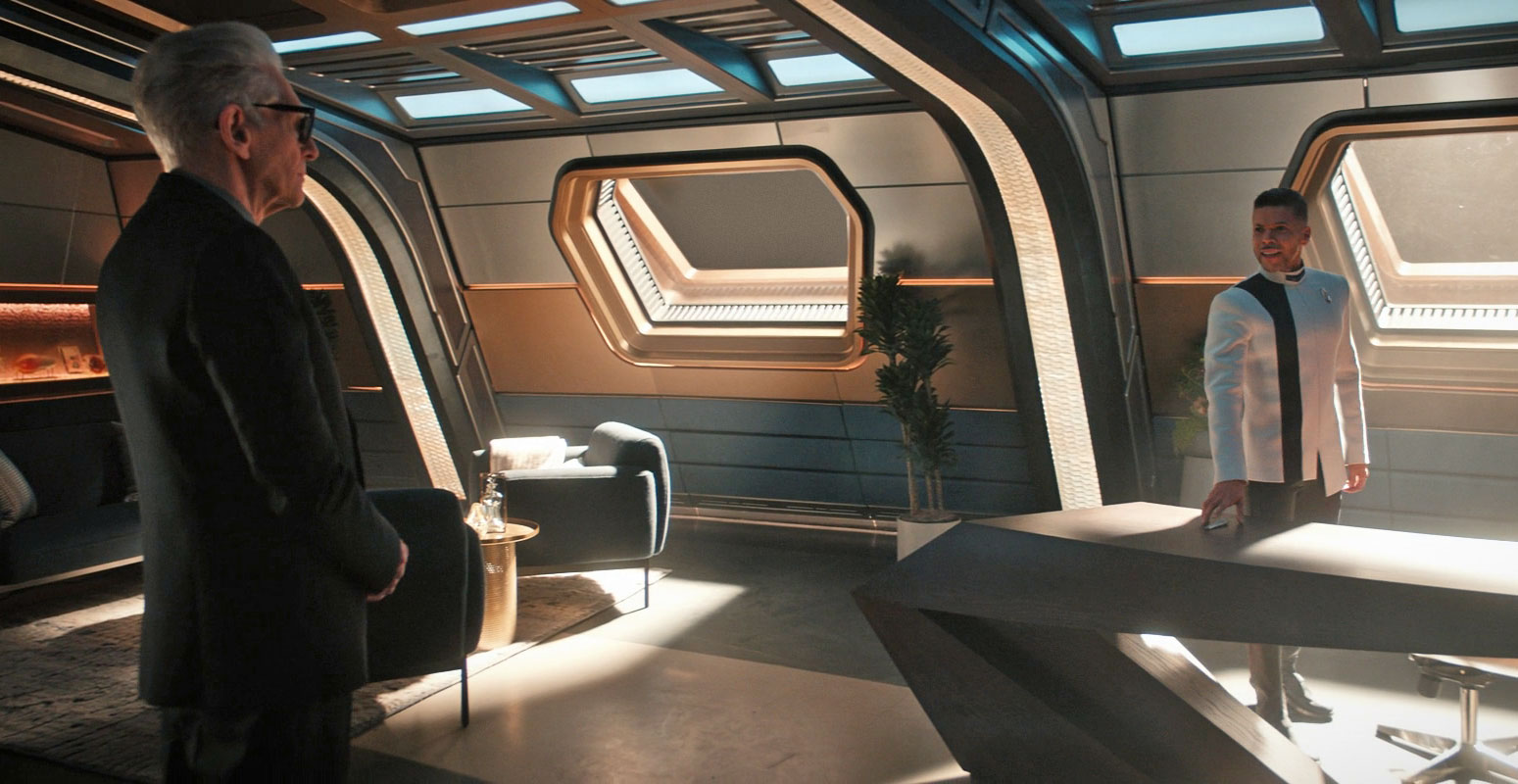
We also learn this week that newly-appointed ship’s counselor Dr. Culber (Wilson Cruz) has been running himself ragged with back-to-back therapy appointments, so much so that Kovich decides to intervene.
It’s not clear from the ten-minute holo-therapy session if Dr. Kovich (David Cronenberg) is himself a trained counselor — or if he’s just filling what on The Next Generation would have been the Guinan role of “wise straight-talker” — but either way, he helps Culber understand just how thoroughly he’s avoided coming to terms with his own experiences of survivor’s guilt.
We haven’t heard a peep about Culber’s murder and subsequent resurrection since he joked about it with Starfleet’s interrogators after the crew arrived to the far future last season, so for all the things Discovery sometimes brushes past without looking back, it’s nice to see that his unlikely resurrection hasn’t been totally forgotten.
As for Kovich, I’m am always happy to see him pop up on the show, but at some point it’d be nice to have some clarity on exactly what his role is within the Starfleet/Federation leadership structure.
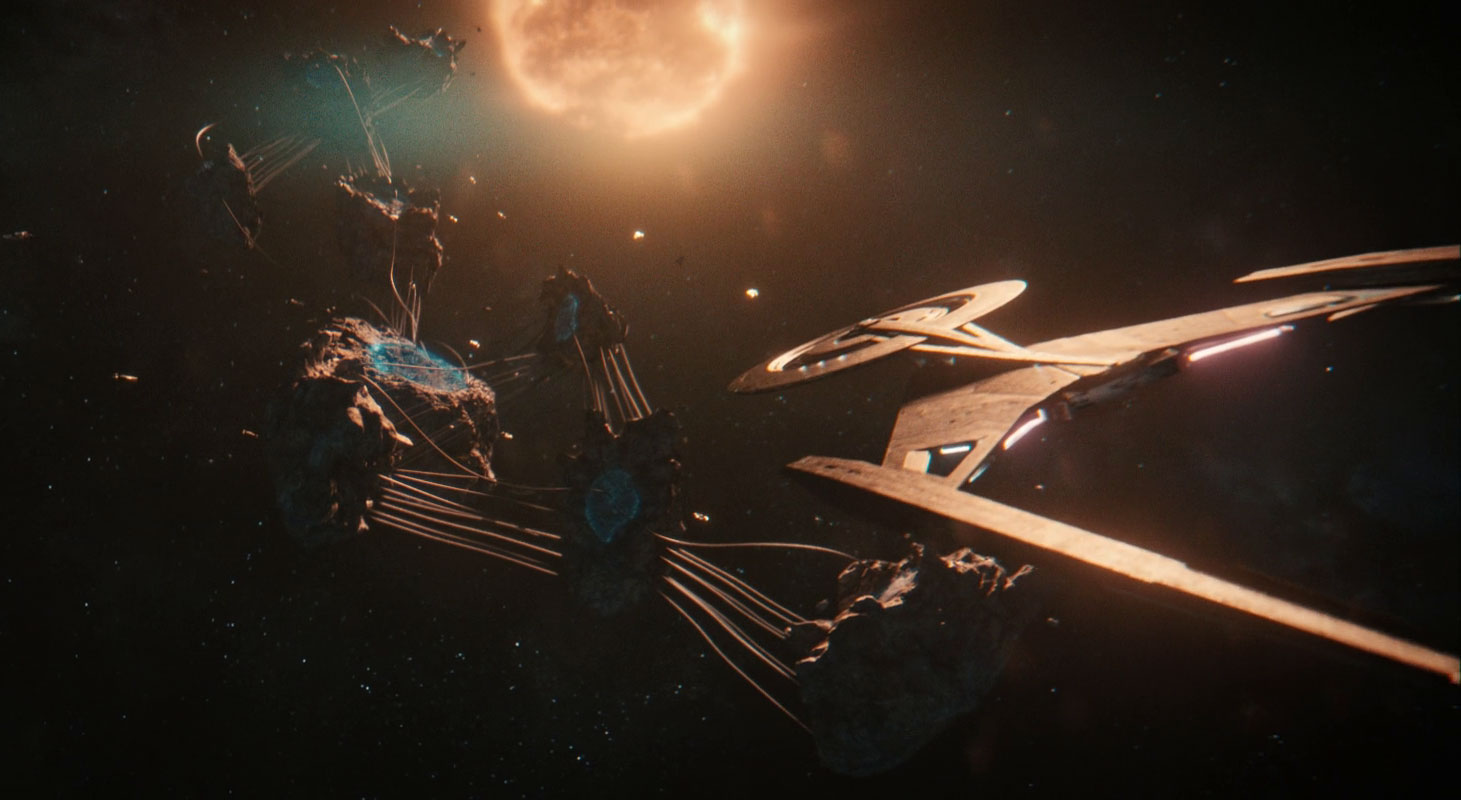
While all that science is happening down in the lab, Discovery is sent to evacuate a small non-Federation asteroid colony located in range of the anomaly’s path. The Radvek Chain, as the colony is known, is peopled by the surprising deep cut Akaali species, an at-the-time pre-warp society seen only in Enterprise’s “Civilization.”
Discovery is quickly on-scene but even so has only three and a half hours to rescue 1200 people before transporters stop working — it’ll be a tight squeeze time wise, but under the supervision of on-site coordinator Lt. Commander Rhys (Patrick Kwok-Choon), the vast majority of the colony gets up to the ship without incident.
Speaking of Rhys, we learn in a rather clunky bit of exposition that he was rescued from a hurricane at the age of five, lending motivation behind his desire to lead the evacuation task force. I’m always glad to learn more about the Discovery crew, but all too often, these bits of character backstory seems to come in the form of information which serves the story, and not out of organic conversation — but what’s strange is that not all the character work is like this.
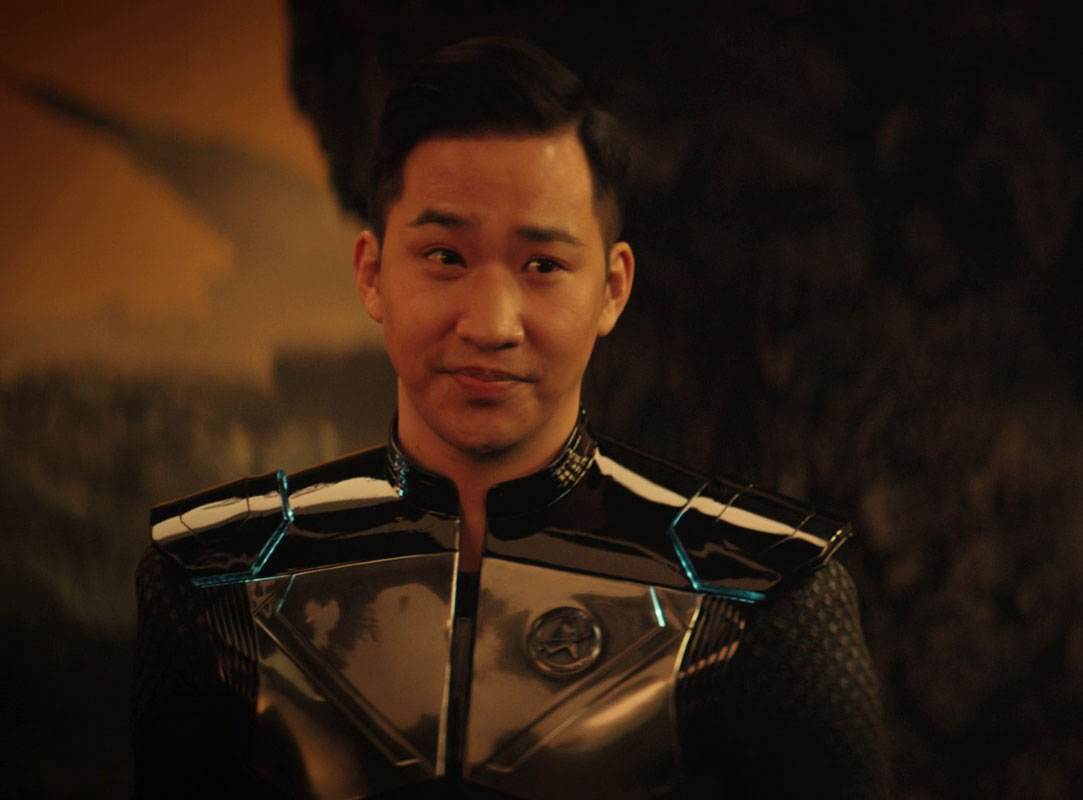
For every moment like Rhys announcing he was saved from a hurricane like reading a fact sheet about himself, or Owosekun telling us last year about how she can hold her breath for a very long time due to her upbringing as an abalone diver (ten minutes before we see her need to hold her breath for a very long time), we get moments like Burnham and Book’s casual, charming, and incidental chit-chat about their past adventures together, Reno telling Culber about her lost wife, or Adira handing out random bird facts gleaned from their pasts hosts — all which make them immediately believable as real, complete people.
The difference is dramatic and I wish some of that magic could be extended to other characters, instead of just checking the “learn something about the bridge crew” box while writing the script.

Anyhow, back to the show: six prisoners are left behind by the colony’s leadership, the eponymous “Examples,” kept in a heavily-shielded prison which blocks transporters. The local magistrate doesn’t understand why anyone would even want to rescue them; as part of their tradition, prisoners are kept as an example to the general populace of what happens when rules are broken — and apparently that example extends to allowing them to die during a disaster.
Rightfully, Captain Burnham (Sonequa Martin-Green) insists they be included in the evacuation, and against the magistrate’s wishes she and Book (David Ajala) head down to the facility.
Down on the asteroid, the pair fight and hack their way through a swarm of mobile landmines disguised rather improbably as large beetles. Once inside, they encounter prisoners — all but one of whom have been sentenced to life in prison for extremely petty crimes — who are initially skeptical then grateful for then skeptical again about the rescue.
Very reasonably, they have no interest in being rescued only to be handed back over to the same system that incarcerated them in the first place — and with the destruction of the asteroid chain likely (but not yet entirely certain), they decide they’d rather take their chances on their own. An offer of asylum with the Federation, however, has them changing their mind about escape and agreeing to leave the asteroid.

The one exception to the “petty crimes only” rule is a man named Felix (Michael Greyeyes) who, 30 years prior, robbed a man who’d shown him hospitality, and in the course of doing so, killed him. He’s also the one exception to the offer of asylum and rescue — not because he’d rather escape but because he’d rather not live with his guilt any longer.
He sees his death as the ultimate form of penance for a crime that clearly haunts him, though I agree with Book’s complaint that Felix’s death is unnecessary… but also with Burnham’s acknowledgement that Felix’s agency and choices must be respected.
While I appreciate the story’s stance that prisoners are not expendable, and have the same right to rescue as anyone else, the statement is watered down by fact that all but one of the prisoners have committed minor crimes for sympathetic reasons… and that the one serious offender feels — even after 30 years of penance — that he deserves to stay behind and die for it.
I don’t think this is the actual intent of the writers, but by falling back on the notion that mistreatment is only bad if it’s unfair, the implication is that the real problem with the system of “examples” (and leaving people to die) is that it’s disproportionately applied, not that it’s inherently inhumane. To me, the real tragedy here isn’t that Felix dies, but that he feels that he’s unworthy of living and must die to finally pay for his crime.
In one final act of contrition before he’s left behind, Felix gives Burnham a small trinket he’d stolen from the man he killed all those years ago and asks that she keep it. She takes the item and is ultimately able to return it to the daughter of Felix’s victim, who is among the evacuees beamed aboard Discovery.
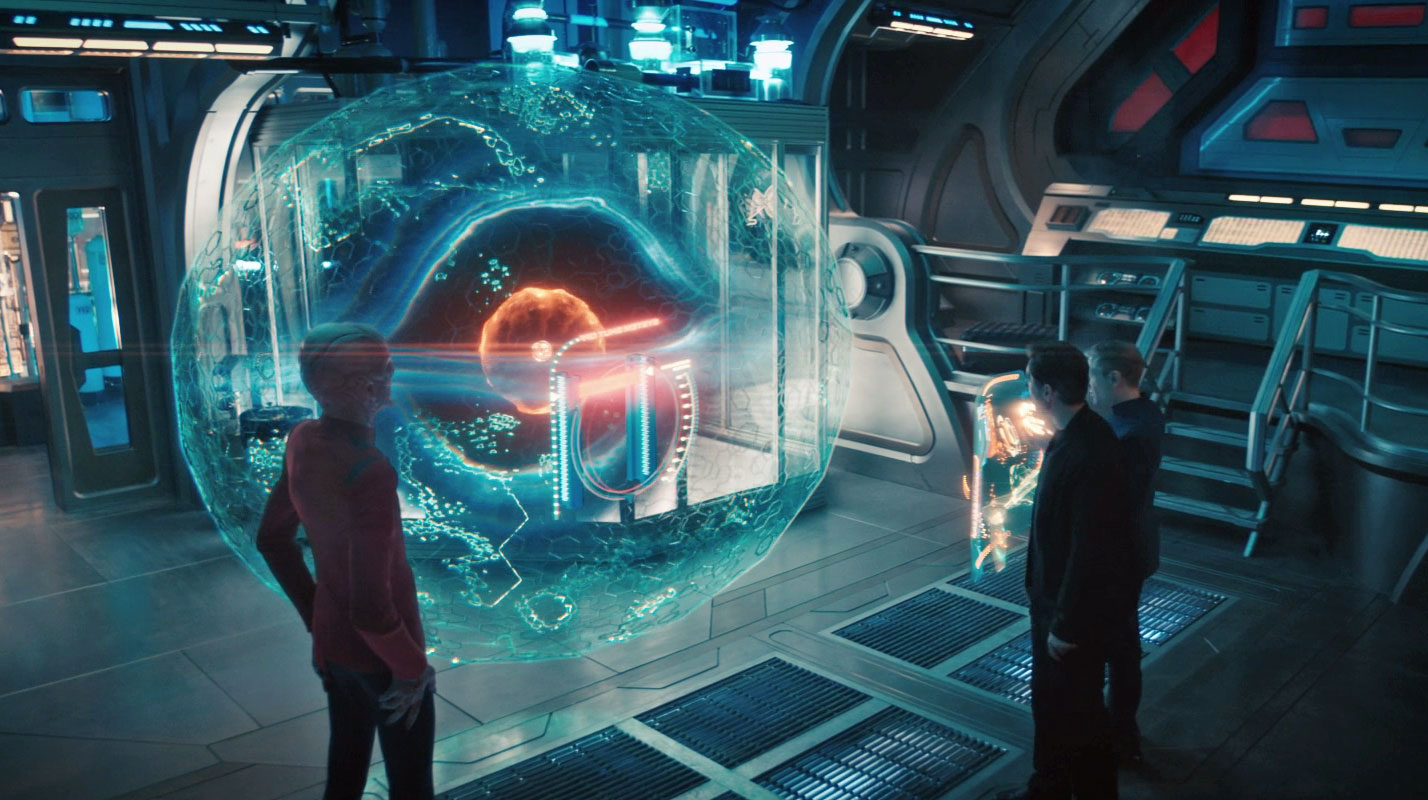
Meanwhile, in the science lab, Tarka carrying out his plan to construct a tiny scale model of what he thinks is the device at the center of the DMA.
If it works and his suppositions are correct, a small self-contained wormhole should develop around the device. Of course, creating a wormhole inside the hull of a ship is a hell of a risky undertaking, but with Stamets’ own growing enthusiasm and Reno’s assurance that a containment field can be maintained, a very hesitant Saru agrees to proceed with the experiment.
Tarka’s general hypothesis is proven to be correct, but the device needs just a little more power — and then a little more, and then a little more — to keep the wormhole stable. Given the power needs of the device, the correspondingly increasing needs of the containment field, and the power-intensive transporter usage needed to evacuate the colony, Saru has a lot of considerations to balance when deciding if Tarka can have the extra power input he wants.
In the end, Saru relents but with the caveat that he have control of a kill switch to use if he feels Discovery and crew are in danger. After some tense moments, Saru finally pulls the plug when the containment field hits 5% strength. The experiment is over for now, and though Tarka doesn’t get all the data he and Stamets want, the general principle has been proven.

At the end of a long day for both of them, Tarka and Book run into each other in the lounge, Book drinking away his anger over Felix’s death and Tarka celebrating being that much closer to understanding the DMA. Tarka explains that if the comparatively microscopic model needed more power than an entire starship could provide, the real DMA must require an unbelievably immense power source, something on par with a hypergiant star… at minimum.
It’s hard to tell if the ominous turn of this conversation comes from Book not being in a chatty mood (combined with Tarka’s typical intense demeanor), or if something else is going on here. Either way, the scene — and the episode — ends with the clear nudge that Tarka has something to hide. The scar on the back of his neck hints that at some point in his past he was held at an Emerald Chain labor camp, but is he hiding something else as well?
Finally, as the evacuations efforts conclude, Burnham informs a distinctly unhappy magistrate that the five remaining “examples” will not be returning with him to serve out the remainder of their lives in custody. In a standout moment of her burgeoning captaincy — and one that is deeply satisfying to watch — she then reminds him that wherever he ends up now, he’ll be arriving as a refugee… and she hopes for his sake that he finds a more just society than the one he helped create.
Hell yeah.
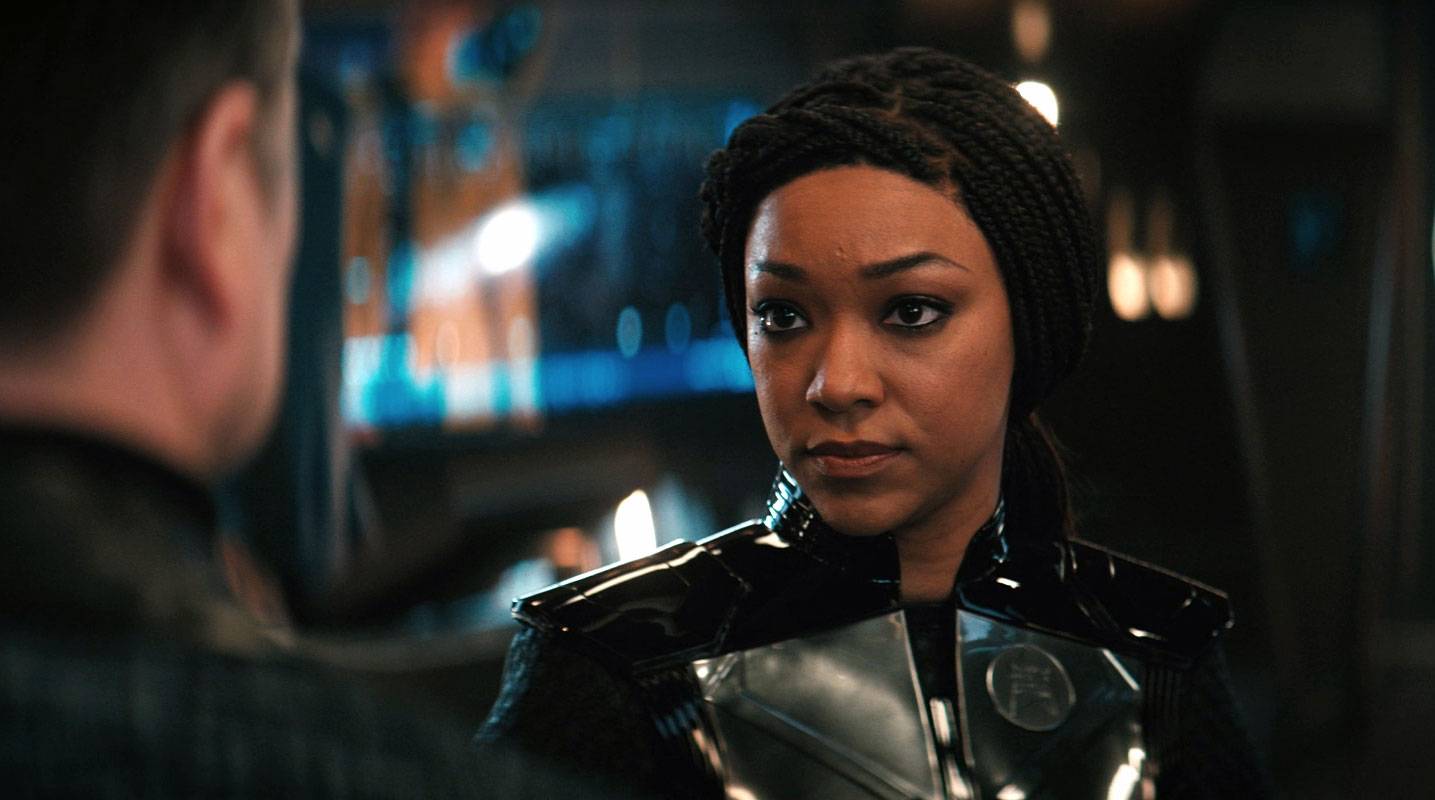
OBSERVATION LOUNGE
- This week marks Tig Notaro’s first time in the Discovery opening credits, and the first episode without Mary Wiseman’s name in place.
- A quick primer on exactly how big a hypergiant star can be: Eta Carinae, a system in the Carina Nebula containing a hypergiant star, has a mass of up to 125 times that of our sun and is four to five million times brighter. To put that mass into perspective? That nearly 42 million Earths.
- Joined by the USS Janeway (!) and another Starfleet vessel, the NSS T’Pau brings the Vulcan — now Ni’Varian — tradition of ring ships into the 32nd century and I couldn’t be happier about it. Love a good ring ship!
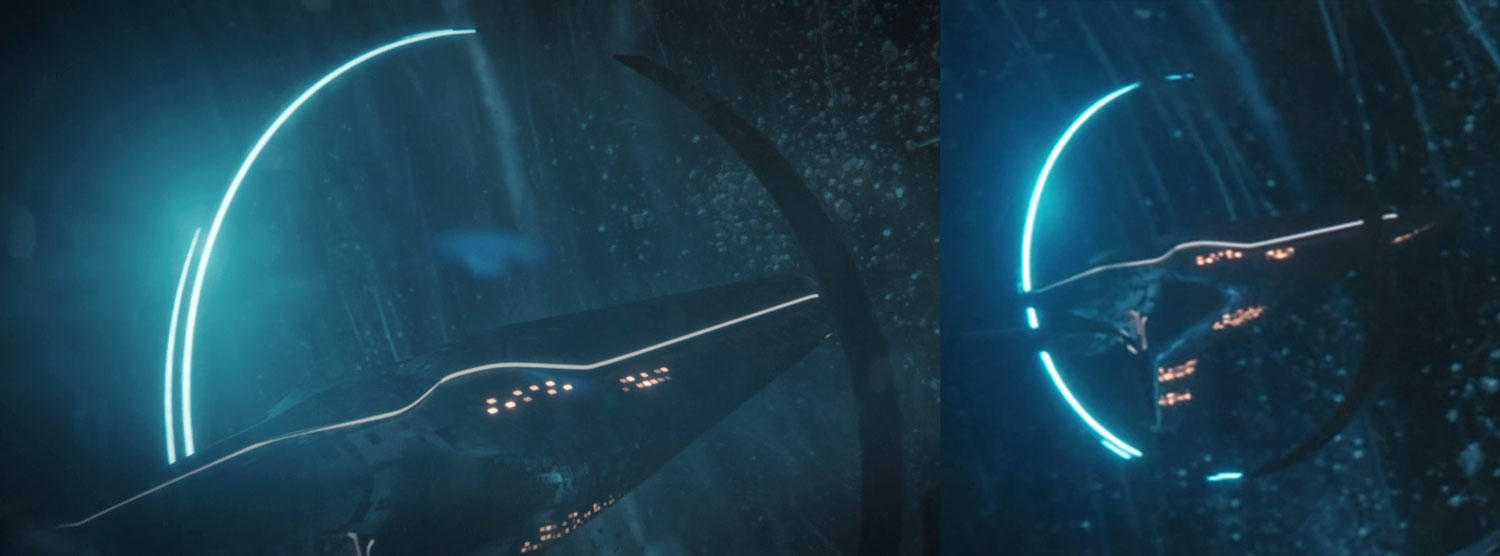
- Vance makes reference to many powerful races from Star Trek past, including the “surviving members” of the Iconian Empire, the Metrons, and the Nacene.
- He also mentions the Q Continuum, noting that it hasn’t been heard from in 600 years — which seems like a pretty significant bit of info to drop ahead of Picard’s second season, (which will be featuring the return of John DeLancie’s Q).
- When discussing Tarka’s study of spore drive technology, Stamets notes that he shared information about the JahSepp, the alien species we met in Season 2 which lives inside the mycelial network.
- I expect to see a lot of fan fiction spring from Book and Burnham’s reminisces about their year spent as space pirates — who weren’t romantically involved with each other but really wanted to be.
- Book brandishes as a neat-looking civilian phaser while on the evacuation mission.
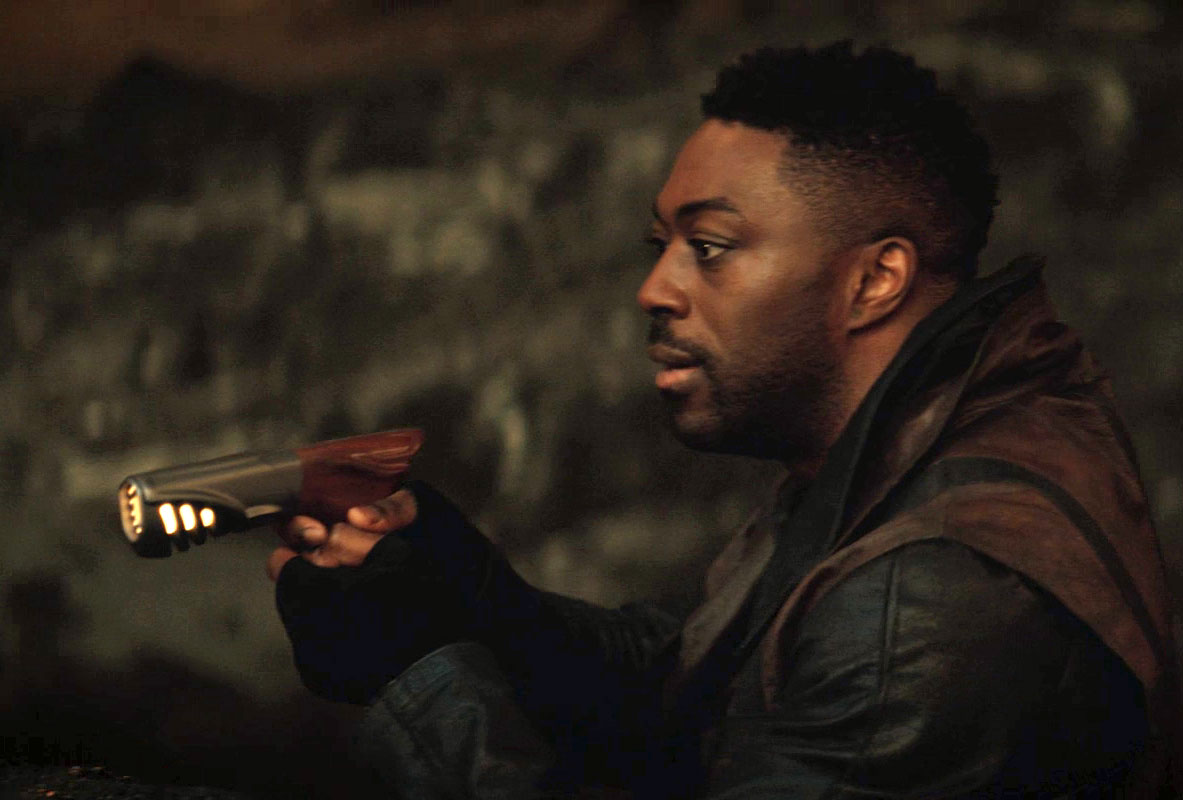
- Burnham queries Zora about historical records in the precious Sphere Data archives, one of the few uses of the ancient database since the ship’s arrival in the 32nd century.
- Zora, the ship’s AI, has gained enough sentience to begin to understand and experience emotions and has taken to analyzing “microinflections” to determine the mood of the speaker. This is an ethically and functionally iffy application of AI now in the 21st century, so for the sake of the crew I’m hoping there’s been some vast improvement by the 32nd.
The last thing folks on the ship need is their computer deciding they’re lying or unhappy or whatever when they’re not, simply because of a misread of their demeanor. This is likely enough just with variations among humans, but adding in the cultural and physical differences of alien crewmembers? Yeesh.
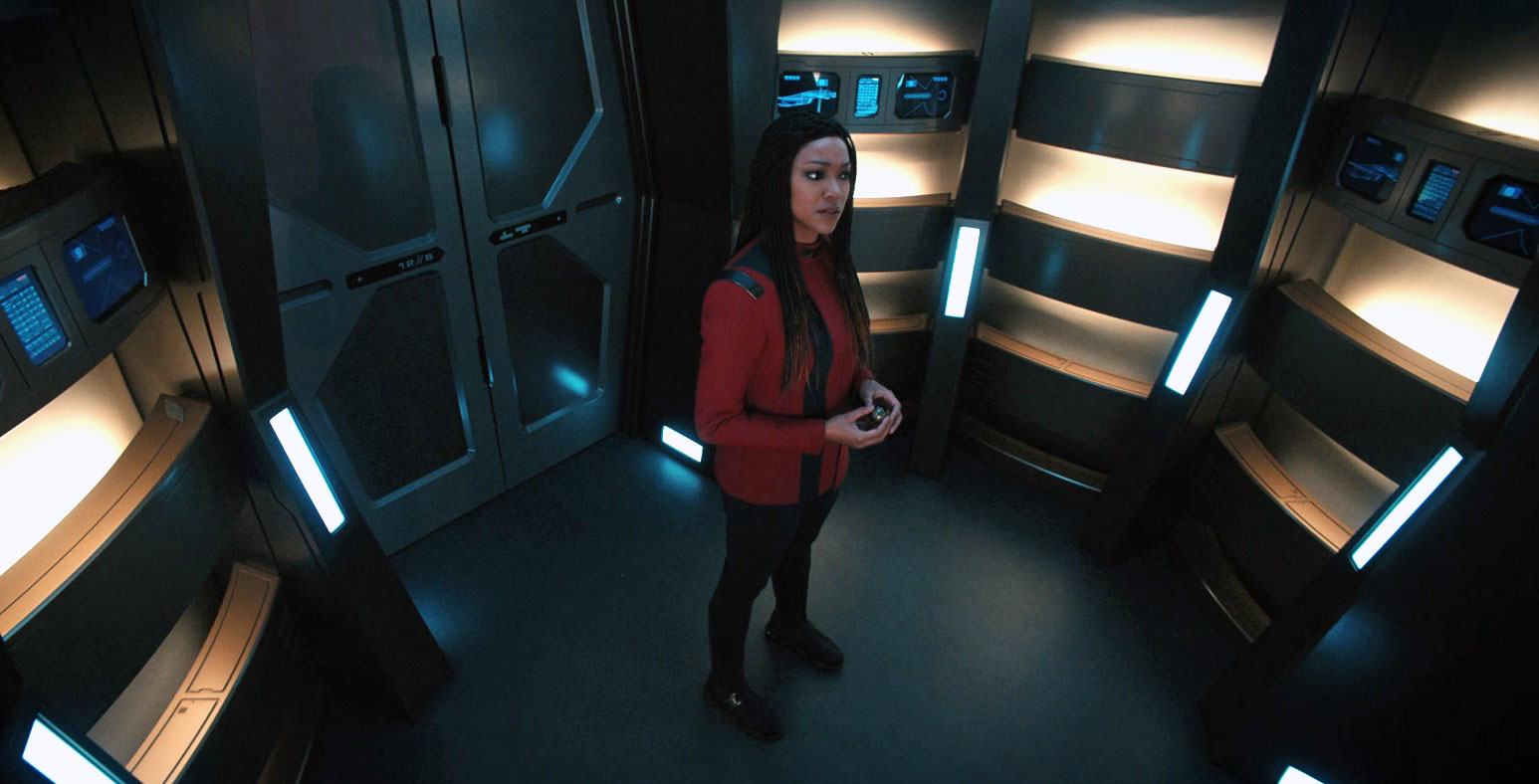
While I don’t think he’s responsible for the DMA, it’s possible Tarka sees it as an opportunity to enact revenge on someone (or something), either by taking control of it or creating a copy of it for his own use. If it means we get to see more him, then by all means make him the bad guy — Shawn Doyle’s take on the character is far too fun for me to complain — but I do think it would be refreshing for the abrasive eccentric to be an ally.
Not everyone who’s pleasant is necessarily good, and not everyone who’s unpleasant is necessarily bad, and Tarka as a “chaotic good” presence would really liven things up around this ship.
![]()
Star Trek: Discovery returns on December 23 on Paramount+ in the United States, and on CTV Sci Fi Channel and Crave in Canada. Outside of North America, the series is available on Paramount+ and on Pluto TV in select international locations.
